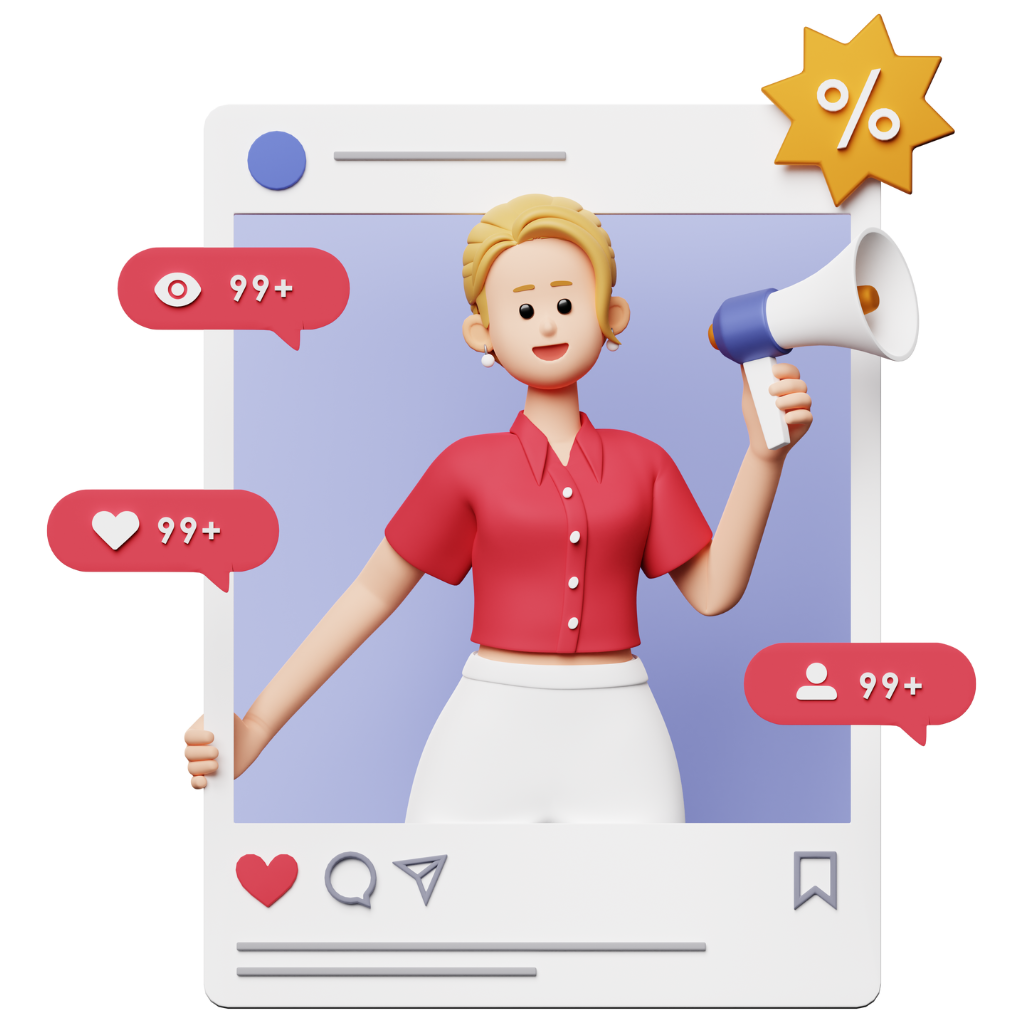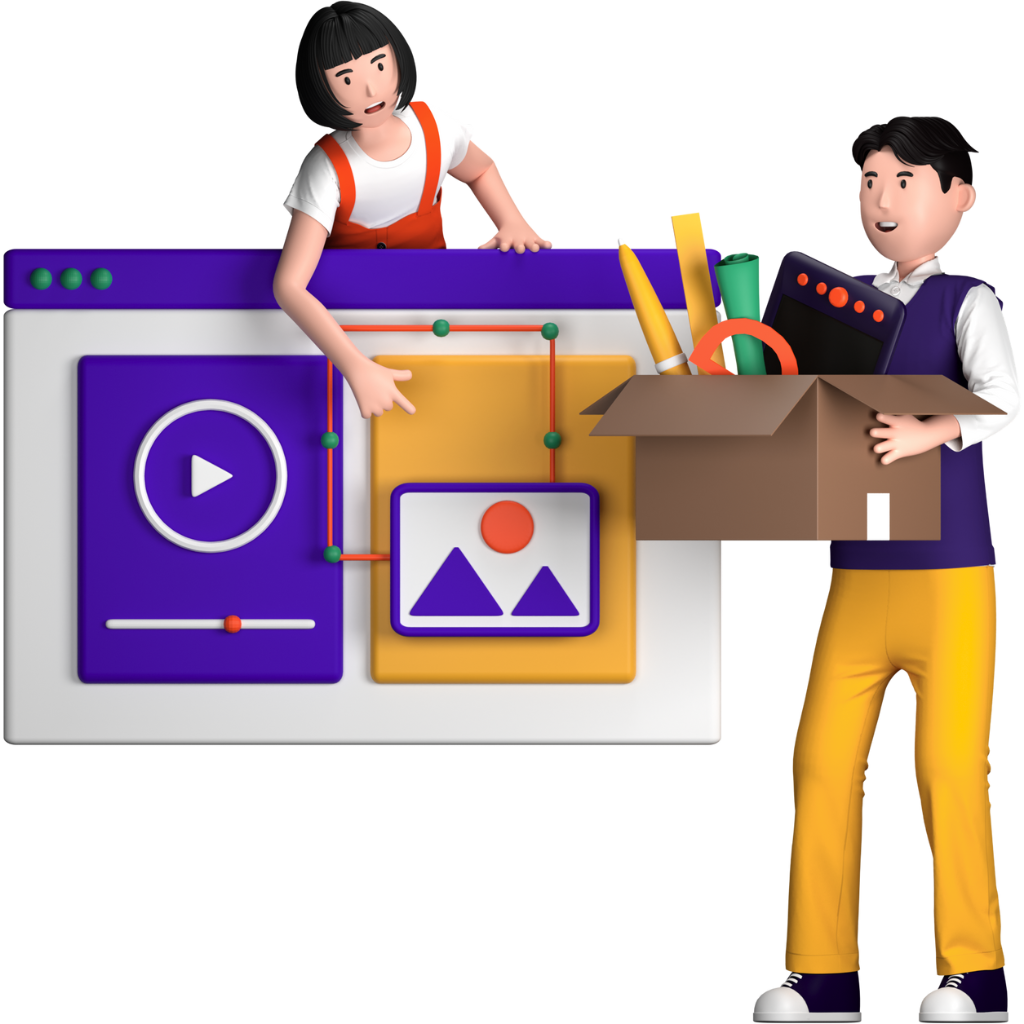Let’s be real—social media can feel like a never-ending maze. With so many platforms out there, businesses often struggle to figure out where to focus their time and effort. Should you be posting on Facebook? Is Instagram worth it? What about TikTok?
The truth is, not every platform is right for every business. Choosing the right social media platforms can make a huge difference in your brand’s visibility, engagement, and even sales. Instead of trying to be everywhere at once (and getting overwhelmed), it’s smarter to focus on the platforms that actually align with your business goals and target audience.
Best Social Media Platforms for Business
In this guide, we’ll break down the top social media platforms, explain their strengths, and help you decide where your business should be active for the best results. Let’s dive in!

Understanding Your Business & Audience
Before you dive headfirst into social media, here’s a truth bomb: Not every platform will work for every business—and that’s okay! The key to social media success starts with understanding two things:
✅ Who your audience is
✅ What your business goals are
Know Your Audience
Ask yourself:
Who am I trying to reach? (Age, location, interests, and behavior)
Where does my audience spend their time online?
What kind of content do they engage with? (Videos, images, articles, etc.)
For example, if you’re targeting professionals or B2B clients, LinkedIn is a goldmine. If your audience loves visual storytelling, Instagram or TikTok may be your best bet.
Align with Your Business Goals
Different platforms serve different purposes. Identify your primary objective:
Want to build brand awareness? Try Instagram or TikTok.
Need to drive website traffic? Pinterest and Facebook work well.
Looking to establish authority? LinkedIn and YouTube are your friends.
💡 Pro Tip: Don’t chase every shiny new platform—focus on where your audience already hangs out and where your content will shine the most.
Breakdown of Major Social Media Platforms
Now that you understand your audience and business goals, let’s take a deeper look at the strengths, weaknesses, and best use cases of each major social media platform. Choosing the right one can make or break your social media strategy, so let’s dive in!

Facebook – The All-Rounder
Best for: Community building, paid advertising, and businesses targeting a broad audience.
Why Choose Facebook?
With over 3 billion monthly active users, Facebook remains the largest social media platform.
Offers a diverse audience, from teenagers to seniors.
Facebook Groups help businesses build tight-knit communities.
Robust advertising platform with advanced targeting options.
Facebook Marketplace allows product-based businesses to sell directly to local buyers.
Challenges:
Organic reach has significantly declined—businesses need paid ads to grow.
Algorithm favors engagement (likes, comments, shares), so posting consistently is crucial.
👉 Best for: Local businesses, service providers, eCommerce brands, and businesses with an ad budget.
Instagram – The Visual Storytelling Hub
Best for: Branding, influencers, eCommerce, and businesses with visually appealing products.
Why Choose Instagram?
Highly visual platform—great for showcasing products, aesthetics, and lifestyle content.
Features like Reels, Stories, and Carousels help businesses create engaging content.
Instagram Shopping & Shoppable Posts make it easy for eCommerce brands to sell directly.
High engagement rates compared to other platforms.
Challenges:
Algorithm favors frequent posting and engagement, so consistency is key.
Content creation can be time-consuming, especially with video content like Reels.
👉 Best for: Fashion, beauty, fitness, travel, and food businesses, as well as influencer marketing.
LinkedIn – The Professional Network
Best for: B2B marketing, networking, and industry thought leadership.
Why Choose LinkedIn?
Perfect for B2B brands, consultants, and professionals looking to establish credibility.
LinkedIn Articles & Posts allow businesses to showcase expertise.
Ideal for recruitment, networking, and industry discussions.
LinkedIn Ads help target professionals based on job title, industry, and skills.
Challenges:
Requires thoughtful and professional content rather than casual posts.
Engagement can be lower compared to other platforms unless content is valuable.
👉 Best for: Consultants, agencies, tech companies, and professional service providers.
Twitter/X – Real-Time Conversations
Best for: Customer service, news updates, and industry trends.
Why Choose Twitter/X?
Great for real-time updates, customer service, and engaging in trending topics.
Brands use it to respond to customer inquiries and complaints quickly.
Hashtags and trending topics make it easy to join conversations.
Works well for businesses that want to build a personality or engage in industry discussions.
Challenges:
Short lifespan of tweets—content disappears quickly without regular posting.
Requires constant engagement to stay relevant.
👉 Best for: News media, tech brands, customer service-heavy businesses, and brands with witty or engaging voices.
TikTok – The Viral Machine
Best for: Short-form videos, younger audiences, and creative marketing.
Why Choose TikTok?
Massive engagement potential—videos can go viral overnight.
Great for younger audiences (Gen Z and Millennials).
Algorithm favors entertaining, relatable, and trend-driven content.
Works well for behind-the-scenes clips, product showcases, and brand challenges.
Challenges:
Requires regular video content creation—not ideal for businesses that can’t commit to frequent videos.
Not as effective for professional services or B2B marketing.
👉 Best for: Beauty, fashion, fitness, entertainment, and eCommerce brands.
Pinterest – The Visual Search Engine
Best for: Long-term traffic, DIY content, and lifestyle brands.
Why Choose Pinterest?
Functions more like a search engine than a social media platform.
Pins have a long lifespan—content can drive traffic for months or even years.
Great for businesses in home décor, fashion, beauty, food, and travel.
Pinterest users are looking for inspiration and solutions—making it a strong platform for brand discovery.
Challenges:
Requires high-quality images and SEO-optimized descriptions for success.
Less about engagement, more about long-term visibility.
👉 Best for: eCommerce brands, bloggers, and businesses with visually appealing content.
YouTube – The Video Authority
Best for: Educational content, tutorials, and long-form storytelling.
Why Choose YouTube?
Second largest search engine after Google—great for long-term discoverability.
Perfect for how-to videos, product reviews, tutorials, and brand storytelling.
Builds trust and authority by providing valuable and informative content.
Monetization opportunities through YouTube Ads and sponsorships.
Challenges:
Video production can be time-consuming and requires a content strategy.
Competition is high, and it takes time to grow a channel.
👉 Best for: Tech brands, educators, fitness experts, and businesses creating valuable video content.
Each social media platform has unique strengths, and your business doesn’t need to be on all of them. Instead, focus on:
✅ Where your audience is most active.
✅ What type of content you can consistently create.
✅ Which platforms align with your business goals.
How to Choose the Right Social Media Platforms for Your Business
Now that we’ve broken down the major social media platforms, it’s time to narrow down your choices. Instead of trying to be everywhere, you need to focus on platforms that will bring the most value to your business. Here’s how to decide:

1️⃣ Identify Your Industry & Business Type
Different businesses thrive on different platforms. Here’s a quick guide:
E-commerce & Product-Based Businesses → Instagram, Facebook, Pinterest, TikTok
Service-Based Businesses → Facebook, LinkedIn, YouTube
B2B Companies & Professionals → LinkedIn, Twitter, YouTube
Local & Small Businesses → Facebook, Instagram, Google Business Profile
Content Creators & Bloggers → Pinterest, Instagram, YouTube
Tech & Startups → Twitter, LinkedIn, YouTube
💡 Example: If you run a beauty brand, Instagram and TikTok will work best since they rely on visual appeal and trends. If you offer legal or accounting services, LinkedIn and YouTube will be more effective for sharing expertise.
2️⃣ Know Your Audience & Where They Spend Time
Your target audience’s age, interests, and online behavior should guide your decision. Consider these audience demographics:
Gen Z (Under 25): TikTok, Instagram, YouTube
Millennials (25-40): Instagram, Facebook, LinkedIn, YouTube
Gen X & Boomers (40+): Facebook, LinkedIn, YouTube, Pinterest
💡 Example: If you’re marketing skincare products to Gen Z, TikTok and Instagram are better choices than Facebook. If you’re a financial advisor targeting business owners, LinkedIn and YouTube will work best.
3️⃣ Consider Your Content Style
Ask yourself:
Do I enjoy making videos? → YouTube, TikTok, Instagram Reels
Do I prefer short text updates? → Twitter/X
Is my business highly visual? → Instagram, Pinterest
Do I create long-form content? → YouTube, LinkedIn, Facebook
💡 Example: If you’re a fitness coach who loves creating video workouts, YouTube and TikTok are perfect. If you write detailed business insights, LinkedIn and a blog are better.
4️⃣ Assess Your Resources & Bandwidth
Be honest: How much time and effort can you dedicate to social media?
If you have limited time, focus on 1-2 platforms where you can be consistent.
If you have a marketing team, you can manage multiple platforms effectively.
If you’re just starting, pick one platform and master it before adding another.
💡 Example: If you’re a solopreneur, running a YouTube channel + daily TikTok posts + Facebook ads might be overwhelming. Instead, start with one platform, then expand.
5️⃣ Analyze Your Competitors
Your competitors can offer valuable insights. Research:
✔ Which platforms they are active on
✔ What type of content gets them engagement
✔ Where they are lacking (so you can fill that gap!)
💡 Example: If your competitors in the eco-friendly makeup niche are killing it on Instagram but ignoring Pinterest, you might find an untapped audience on Pinterest.
You don’t need to be on every platform—just the right ones. Start with one or two platforms, grow your presence, and expand over time. Quality matters more than quantity.
Pro Tips to Maximize Your Success on Social Media
Once you’ve chosen the right platforms for your business, it’s time to optimize your strategy for growth. Here are some expert tips to make the most out of your social media presence:

1️⃣ Be Consistent with Posting
Social media algorithms favor consistency, so stick to a regular posting schedule:
✔ Instagram & Facebook: 3-5 times per week
✔ TikTok: 3-7 times per week
✔ Twitter/X: Multiple times per day
✔ LinkedIn: 2-3 times per week
✔ Pinterest: 10-20 pins per week
✔ YouTube: 1-4 times per month (depending on video length)
💡 Pro Tip: Use a content calendar and scheduling tools (like Buffer, Hootsuite, or Meta Business Suite) to plan and automate posts.
2️⃣ Prioritize High-Quality Content
Good content attracts and retains followers. Here’s what works best on each platform:
✅ Instagram/TikTok: Short-form videos, reels, and high-quality images
✅ LinkedIn/Twitter: Thought leadership posts, industry insights, and networking content
✅ YouTube: In-depth tutorials, product reviews, and educational content
✅ Pinterest: SEO-optimized images, infographics, and blog post promotions
💡 Pro Tip: Don’t just post for the sake of posting—focus on value. Educational, entertaining, and engaging content performs best.
3️⃣ Engage with Your Audience
Social media isn’t just about posting—it’s about interaction. Engage with your audience by:
✔ Replying to comments & messages quickly
✔ Asking questions & encouraging discussions
✔ Collaborating with influencers or industry experts
✔ Using interactive features (polls, Q&As, live videos)
💡 Pro Tip: Engagement boosts visibility—the more active you are, the more your content gets shown to others.
4️⃣ Use Hashtags & SEO to Increase Reach
Each platform has its own discovery system, so optimize for visibility:
Instagram/TikTok: Use trending and niche hashtags (#SmallBusinessTips)
YouTube/Pinterest: Focus on SEO with keyword-rich titles, descriptions, and tags
Twitter/X: Use trending hashtags and participate in discussions
LinkedIn: Add relevant hashtags and optimize your profile for searches
💡 Pro Tip: Don’t overuse hashtags—stick to 5-10 relevant ones per post for the best results.
5️⃣ Leverage Social Media Ads (If Budget Allows)
Organic reach is declining, so paid ads can boost visibility. If you have a small budget, start with:
Facebook & Instagram Ads → Retargeting, carousel, and story ads
Pinterest Ads → Great for product-based businesses
YouTube Ads → Pre-roll ads for brand awareness
LinkedIn Ads → Best for B2B lead generation
💡 Pro Tip: Even a small budget ($5-$10 per day) can drive targeted traffic and conversions.
6️⃣ Track Performance & Adjust Your Strategy
The best way to improve is by analyzing your results. Use built-in tools like:
Facebook/Instagram Insights → Engagement, reach, and demographics
Twitter Analytics → Best-performing tweets
Pinterest Analytics → Top pins and traffic sources
YouTube Analytics → Watch time, click-through rate, and audience retention
💡 Pro Tip: Double down on what’s working and pivot away from what isn’t.
Success doesn’t happen overnight. Stay consistent, experiment, and refine your strategy over time. The more you engage and provide value, the better your results will be!
Conclusion: Focus on What Works for Your Business
Social media is a powerful tool for growing your business, but success comes from choosing the right platforms and using them strategically. Instead of spreading yourself too thin, focus on where your audience is most active and where you can consistently create valuable content.

Key Takeaways:
✅ Know your audience—different platforms attract different demographics.
✅ Align with your business goals—B2B? Try LinkedIn. Visual brand? Instagram & Pinterest.
✅ Focus on quality over quantity—post consistently, but make sure your content is engaging.
✅ Engage with your followers—social media is about conversations, not just broadcasting.
✅ Analyze and adapt—track your performance and adjust your strategy over time.
💡 Final Tip: Start with one or two platforms, master them, and then expand as needed. Social media success is a long-term game, so stay patient, experiment, and keep improving!
Ready to build a strong social media presence for your business? Start today by choosing the best platform and creating content that connects with your audience!
Frequently Asked Questions (FAQs)
The best social media platforms for small businesses depend on the industry and target audience. Generally, Facebook, Instagram, LinkedIn, and TikTok are effective for brand awareness, engagement, and sales.
To choose the best platform, consider your audience, business type, content style, and available resources. For B2B, LinkedIn works best, while product-based businesses thrive on Instagram, Pinterest, and TikTok.
It’s best to start with one or two platforms, master them, and then expand. Spreading too thin across many platforms can reduce content quality and engagement.
LinkedIn is the top platform for B2B businesses, offering networking, lead generation, and authority-building opportunities. Twitter and YouTube can also be useful for thought leadership and education.
TikTok and Instagram Reels have the highest engagement rates due to their short-form video content and interactive features. However, engagement depends on content quality and audience targeting.
Yes, paid social media ads (like Facebook Ads, Instagram Ads, and LinkedIn Ads) can boost brand visibility, drive traffic, and increase conversions—especially for businesses struggling with organic reach.
Posting frequency varies by platform:
Instagram & Facebook: 3-5 times per week
TikTok: Daily or 3-7 times per week
Twitter/X: Multiple times daily
LinkedIn: 2-3 times per week
Pinterest: 10-20 pins per week
YouTube: 1-4 times per month
The best-performing content includes:
✔ Short-form videos (Instagram Reels, TikTok, YouTube Shorts)
✔ Educational & how-to posts (LinkedIn, YouTube, Twitter)
✔ Engaging images & infographics (Pinterest, Instagram)
✔ Interactive content (polls, Q&As, live videos)
While social media is a powerful tool for marketing, businesses can also grow through SEO, email marketing, content marketing, and paid ads. However, social media offers cost-effective brand visibility and direct audience engagement.
For local businesses, Facebook, Instagram, and Google Business Profile are the best platforms. Facebook and Instagram help with engagement and promotions, while Google Business Profile boosts local search visibility.